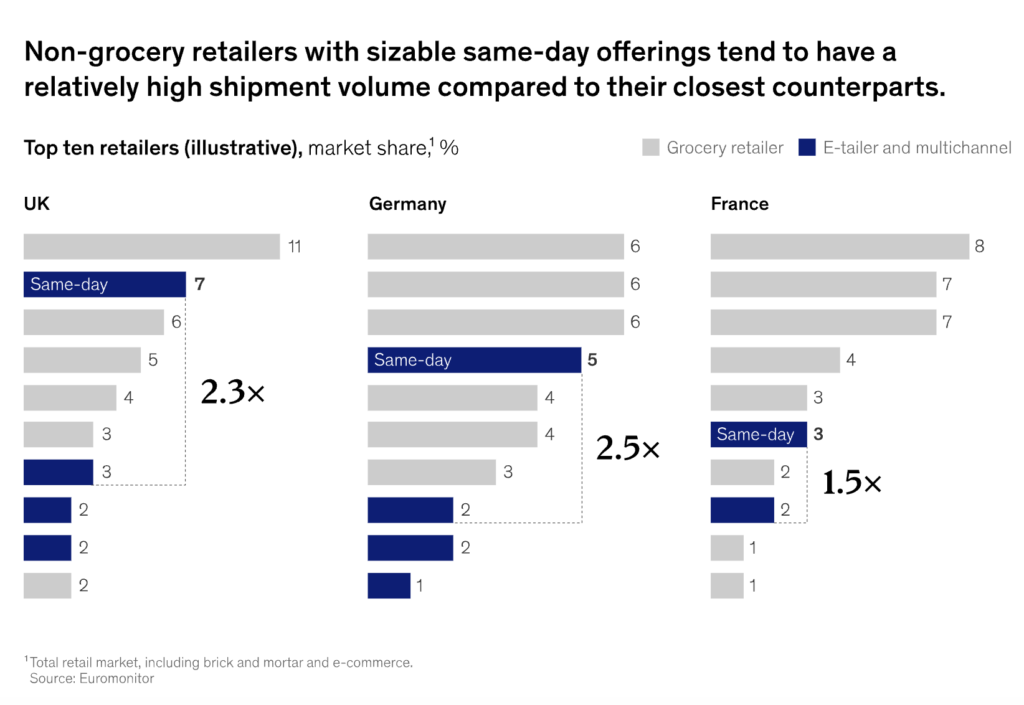Same-day delivery, where a customer places an e-commerce order and delivers it within the same calendar day, is a small market segment. A McKinsey analysis suggests that same-day accounts for less than 5 percent of most countries’ courier, express, and parcel (CEP) market.
McKinsey examines six variables that drive the potential for same-day delivery services. These conditions define the pace at which same-day delivery adoption may be approaching. However, retail, e-commerce, and parcel companies needn’t wait for variables to align before exploring faster delivery options. While companies monitor market conditions, they might consider “24-hour delivery” as an alternative value proposition that resonates with customers’ desire for various options that offer speed, reliability, and reasonable cost.
Urban density
Almost all same-day delivery volumes are concentrated within cities. It’s an urban pursuit where population size and density are the most important variables to balance. Only large metropoles can generate demand and supply volumes to enable same-day services.

Willingness to invest
Theoretically, many e-tailers (from giants like Amazon to SMEs active in e-commerce) could offer same-day delivery services. But they may need to commit and invest if they are going to do so, especially if customers are reluctant to pay a premium for the offering.
Logistics enablers
Same-day delivery capability is reliant on the proximity of inventory to urban consumers. Retailers may bring products closer to customers via a decentralized fulfillment center network of smaller hubs that hug urban areas. Alternatively, they can consider tapping into new urban logistics assets, such as e-commerce fulfillment in retail stores or in-city dark stores.
Willingness to pay
Consumers show some excitement about the idea of same-day delivery but seem to be more enthusiastic about precise delivery tracking; overall, to the consumer, reliability could be more important than delivery speed.
Order time for same-day cutoff
Orders placed before one or two o’clock in the afternoon are eligible for same-day delivery. Orders tend to peak at around 10 a.m., and remain fairly consistent throughout the afternoon, meaning fewer than half of orders qualify for same-day. Extending the time limit is an option for boosting same-day orders, but it may require ramping up capacity by, for example, introducing increased automation.
Urban regulations
Important community protections may influence the same-day delivery market. These include regulations on the use of autonomous delivery vehicles which same-day service providers could use. Air-quality regulations that impact the use of internal combustion engine (ICE) vehicles in cities, congestion control measures, and relatively new dark-store closures or limitations may also shape the same-day delivery ecosystem.
Source: McKinsey
